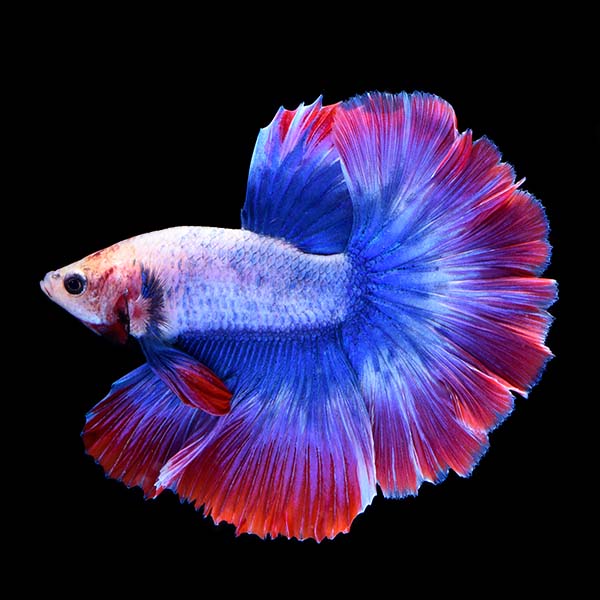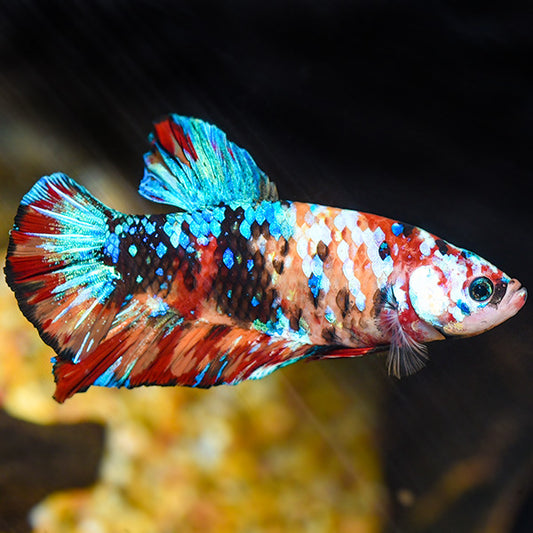How to Present Betta Fish to a Community Storage Tank Securely
Breeding Betta Fish: a Comprehensive Step-By-Step Overview to Efficiently Raising Infant Bettas From Eggs to The Adult Years
Breeding Betta fish is a meticulous venture that calls for mindful planning and implementation to make certain the effective advancement of fry from eggs to mature fish. As the male Betta faithfully constructs a bubble nest and guards the valuable eggs, the subsequent stages of treatment and shift need interest to detail and understanding of finest practices.

Picking Breeding Pairs
When starting the journey of breeding Betta fish, choosing the appropriate reproduction sets is critical to accomplishing desirable qualities and a healthy and balanced family tree - betta fish. The initial step in this process is to identify the specific characteristics you want to enhance or preserve, such as color, fin kind, and physique. It is necessary to choose genetically varied sets to avoid inbreeding, which can result in health and wellness issues and unfavorable attributes
Review prospective reproducing prospects very carefully. A healthy and balanced male Betta must show vivid colors, an active disposition, and well-formed fins, while the woman ought to also display dynamic coloration and a rounded belly, showing readiness for spawning. Observing the temperament of both fish is vital, as hostile or excessively reluctant individuals might not reproduce efficiently.
Maintaining documents of the moms and dad fish's ancestry can help you track hereditary characteristics and possible problems. Ultimately, investing time in the option procedure will significantly boost the possibility of creating strong, lively spawn that fulfill your breeding goals.

Preparing the Breeding Container
Producing an ideal reproduction atmosphere is a crucial action after picking suitable sets for Betta fish. The breeding container ought to be particularly created to supply comfort and stimulate the all-natural breeding actions of the fish. Beginning with a tank dimension of a minimum of 10 gallons to guarantee adequate room for both the male and female Bettas.
Keep a gentle filtration system to maintain the water tidy while preventing solid currents that can worry the fish. Furthermore, an air rock can be included in give oxygenation without interfering with the water surface area as well a lot.
Temperature level regulation is crucial; goal for a stable series of 78-82 ° F(25-28 ° C) making use of a dependable heating system. The pH degree ought to be kept in between 6.5 and 7.5, and routine water changes are required to guarantee high water top quality.
Include drifting plants or generating mops to create hiding places for the woman, while also urging bubble nest building by the male - betta fish. Lastly, make try this certain the storage tank is without sharp designs and any type of potential dangers, as the well-being of the fish must constantly be prioritized during this important stage of reproduction.
The Reproduction Refine
Typically, the reproducing procedure for Betta fish entails a collection of distinct and observable actions that indicate readiness for reproduction. The male Betta begins by building a bubble nest at the water's surface, which offers as a website for the fed eggs. This nest is important, as it provides a secure environment for the eggs up until they hatch out.
Once the nest is developed, the man will display courtship habits, such as flaring his fins and exhibiting vivid colors to attract the woman. The woman, upon sensing the man's preparedness, will certainly respond by showing vertical stripes along her body, indicating her receptiveness.
The fed eggs then fall to the bubble nest, where the male carefully collects and returns them to the nest. Following this, the male presumes responsibility for protecting the nest and guaranteeing the security of the eggs up until they hatch out, generally within 24-36 hours.
Taking Care Of Betta Fry
Looking after Betta fry needs careful focus to their environment and nourishment to make sure healthy development and growth. After hatching out, Betta fry are extremely little and vulnerable, requiring a stable and tidy environment. Keeping a water temperature in between 78 ° F and 80 ° F is critical, as Betta fry prosper in cozy problems. Furthermore, make certain that the water is devoid of harmful toxic substances; normal water changes of 10-20% are recommended to keep optimal water top quality.
Feeding Betta fry is similarly crucial. Feed them tiny quantities numerous sites times a day, being mindful not to overfeed, which can lead to water top quality concerns.
Transitioning to Grownup Bettas
As Betta fry fully grown, transitioning them to adult Bettas is a critical stage that calls for mindful administration of their atmosphere and social interactions. This process usually begins when the fry reach around 6 weeks of age, whereupon they can be gradually presented to a much more structured living atmosphere.
To promote this transition, it is important to make certain that the water specifications-- such as temperature, pH, and ammonia levels-- are optimum and steady. Grown-up Betta fish flourish in cozy water (around 78-80 ° F) with a pH of 6.5 to 7.5. Slowly acclimate the fry to these problems to reduce stress.
Social communications are another crucial factor; man Bettas are notoriously territorial and aggressive. It is recommended to different males into private storage tanks as they grow. Female Bettas can be housed with each other, but care needs to be taken to check for signs of hostility.
Additionally, dietary changes should be made as the fry grow. Include high-quality pellets and live foods to sustain their development and health. By handling these variables effectively, you can promote an effective change to their adult years for your Betta fish.

Conclusion
Successful reproduction of Betta fish calls for mindful focus to detail throughout the entire procedure, from picking genetically varied pairs to providing ideal look after fry. By making sure suitable reproduction problems and keeping water quality, the possibility of healthy and balanced children enhances significantly. Furthermore, a well balanced diet regimen and steady adjustment to grown-up atmospheres are vital for the development and he said growth of Betta fish. Complying with these actions faithfully promotes a prospering population of Betta fish, boosting both their health and wellness and vitality.